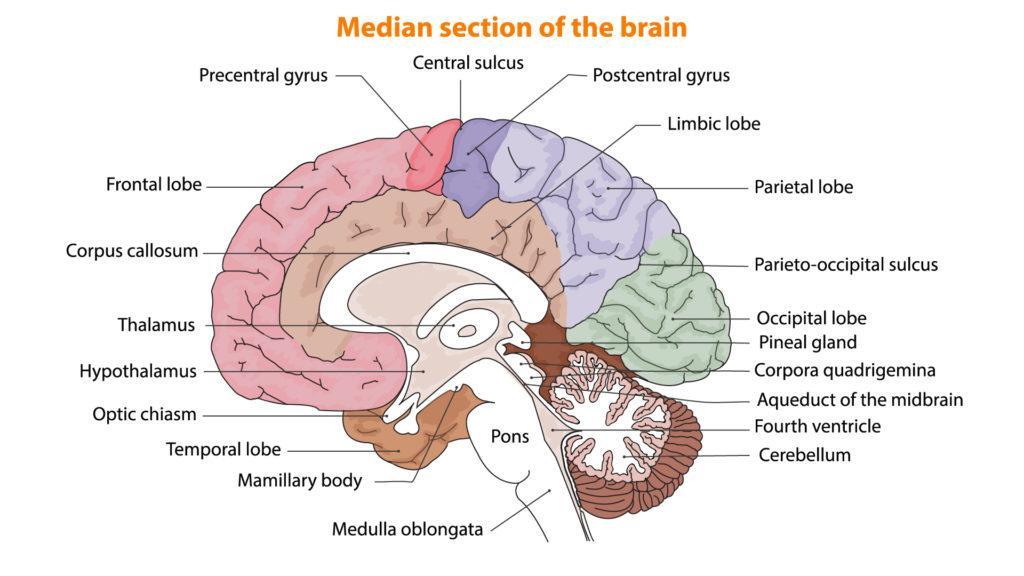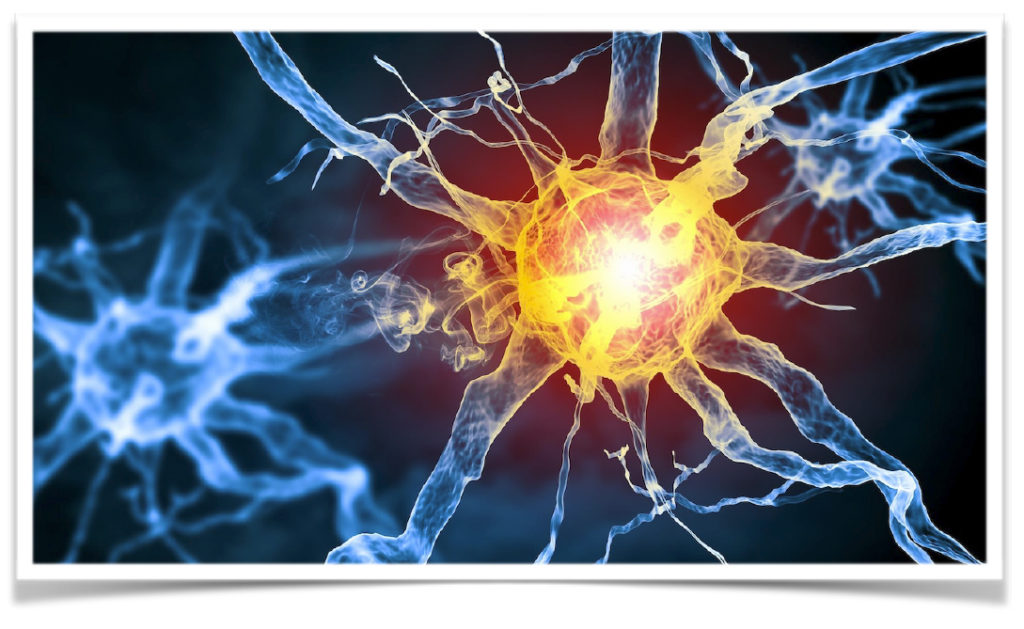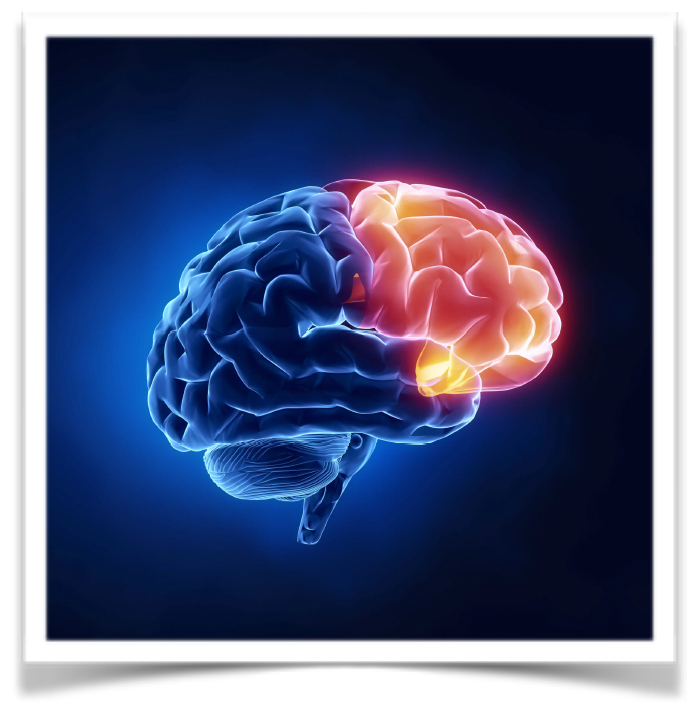Brain Anatomy
Biological brain composition
The human brain is a set of structures laid out in 5 levels.

1st level
The reptilian brain, which has only the name as such, is a brain structure that extends the spinal chord, until it gets immersed in the central part of the brain. This is the surveillance center and of awareness of day and night. It is composed in its core and mid part of a grey matter, that we find in the high part of the brain, and we called it the active and inactive surveillance function. In this matter, a cluster of neurons has been found which are the brain rhythmicity neurons. It is here where the brain rhythm is controlled.
Then we find the oblong medulla, the bridge and the high part of the brain stem. It is here where all the control centers of all the body organs are controlled from a distance. In this exact area we find the breathing center, which has a double breathing command at 80% unconscious. Animals do not have this possibility. Right next to it there is another center that is responsible for the heart rhythm. This center will command the heart to stop working 4 hundredths of milliseconds before, by means of its nodal relay in the heart, in case of myocardium destruction, when there is mainly an invasive heart attack.
2nd level :
Here we have the production of dopamine; a neuro-hormone produced by the black substance. The neurons that synthetize and release dopamine are of blackish color. This dopamine has a strong brain incidence, it acts on the body balance sense. When there is a lack of it, it causes an agitating paralysis called Parkinson’s disease.
3rd level:
The lower cortex of the brain with its two hemispheres and completely different modes of operating. The myth of two brains, right and left, is false!!! In the middle of these two parts the neural epiphysis is located. The left hemisphere works based on linearity and frequency, and it manages information in a completely different manner, formalizing the information. The right hemisphere works in an anarchic and not linear manner, and it maintains the non-shape.

4th level: Limbic zones.
Limbic system anatomy
The limbic system consists of several nuclei located under the cortex (subcortical structures) and near the thalamus :
– The hippocampus which has a role in learning and storing information in long-term memory.
–The amygdala makes sense in aggression, anger, fear, anxiety and emotional memory. Burdach (1776-1847) coined the term amygdala. When it is electrically stimulated, animals react aggressively. And if the amygdala is removed, the animals become very tame and no longer respond to things that would have caused rabies before.
-The fornix.
–Limbic cortex:(cingulate gyrus, cingulum, insula and para-hippocampal gyrus): role in conscious control of behaviour.
-The septum. One of the first functional roles to be associated with the septum was involvement in the reward (or reinforcement) circuit. The septum nuclei have been involved in a number of other roles such as social behaviour and expression of fear, and abnormalities in septal function have been linked to a variety of conditions ranging from depression to schizophrenia.
–The hypothalamus. It is one of the vital parts of the limbic system. It is responsible for the production of multiple chemical messengers, called hormones. These hormones control water levels in the body, sleep cycles, body temperature and food intake. The hypothalamus is located below the thalamus.
-Mammary bodies
–The cingulate gyrus, on the other hand, serves as a channel for transmitting messages between the inner and outer parts of the limbic system.
-Anterior nucleus of the thalamus.
-The epiphysis.
5th level :
Prefrontal cortex

Prefrontal cortex, lodging 30 thousand million neurons. It is located behind the forehead. It has been confused with the frontal lobe, from which it is separated. The latter is divided in three parts: lower, medium and upper.
The human being is the only live being who has a frontal lobe. It is the orchestra conductor of all the brain zones, from the upper to the lower part. Primates also have a suborbital protuberance.
Between the fifteenth and eighteenth day after conception, stem cells generate the glial cells and subsequently neurons. The prefrontal cortex takes 30 years to be completely developed. After the 5th month of pregnancy, the brain is totally completed.







